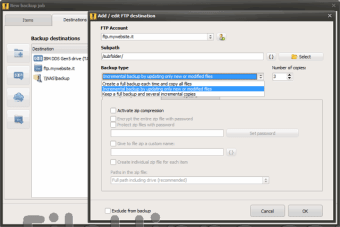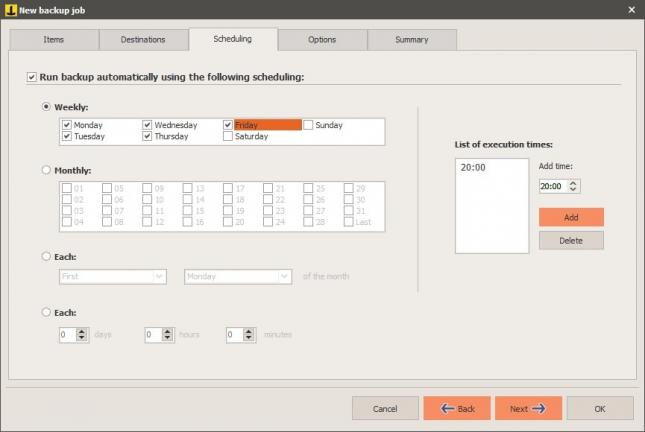

We must therefore be sure of what we do, and that the backup copy must actually be synchronized. It should be remembered that synchronization is an option to be used with caution, because it is an operation that permanently deletes files from backup folders. Synchronization with offsite storage space like Google Drive or Amazon S3 allows you to have one or more folders synchronized between different users, or still have a mirror copy of local files up to date. In fact, Iperius is a complete cloud backup software, which allows you to upload and synchronize files even on Google Drive, Dropbox, Azure Storage, Google Cloud Storage, OneDrive, One Drive for Business accounts, Amazon S3 and any other S3 compatible storage (Minio, FreeNAS, Aruba Cloud, Wasabi, etc.).

Synchronization can be used not only for copying files to NAS or local disks, and for copying to FTP and SFTP. You must be sure of what you are doing, and it is generally recommended to keep at least another backup copy where synchronization is not used. Please remember that synchronization should be used carefully, since it is an operation that permanently delete files from backup folders. You can configure unlimited backup jobs to make multiple synchronizations at the same time (parallel execution). Iperius allows to synchronize folders and files in a very simple way. Enabling it is very simple, since you just need to check the dedicated option in the destination, as shown in the picture below: Synchronization is available in two different backup types: backup to local mass storage devices (external USB drives, RDX, NAS, etc.), also using zip compression, and FTP backup (upload). In this way you can save disk space and keep perfect mirror copies of your important folders. One of these features is the Synchronization, therefore the chance to delete from the backup those files no more existing in the source items. Iperius is a very flexible backup software and comes with many advanced features to optimize backup efficiency.


 0 kommentar(er)
0 kommentar(er)
